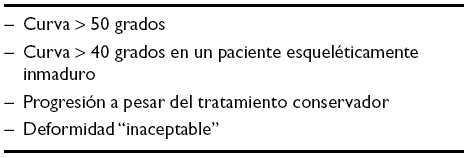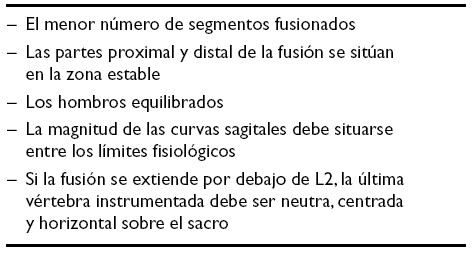El tratamiento quirúrgico de la escoliosis ha sufrido por una evolución muy dinámica los últimos 50 años con aparición rápida de nuevas técnicas los últimos 10 a 15 años. Desde el inicio del siglo XX hasta finales de los 50 la norma de tratamiento quirúrgico era una fusión posterior con yeso postoperatorio. El concepto de instrumentación segmentaria se extendió al uso de ganchos y barras para la instrumentación. Los últimos años se ha introducido la instrumentación multisegmentaria y el uso de tornillos pediculares con aumento en la estabilidad y corrección, y los pacientes pueden salir del hospital sin corsé o yeso. Los avances en anestesia y el cuidado postoperatorio han permitido que los cirujanos ejecuten cirugía más compleja, incluso abordajes anteriores y posteriores en el mismo día y el índice de complicaciones ha disminuido dramáticamente.
The operative management of scoliosis has gone through a very dynamic evolution over the past 50 years with especially rapid explosion of new techniques in the past 10 to 15 years. From the early 1900s to the late 1950 the standard surgical treatment was a posterior fusion supported by postoperative cast. Introduction of spinal instrumentation combined with spinal fusion was the major step forward in the operative management of scoliosis. The concept of segmental instrumentation was expanded to include multiple hook and rod instrumentation. Last years the multisegmental instrumentation and the use of pedicle screws were introduced to add correction and stability, and the patients were able to leave the hospital without wearing a cast or a brace. Advances in anesthesia and postoperative care have allowed surgeons to perform more complex surgery, including same day anterior and posterior procedures and the index of complications decrease dramatically.
Artículo
Comprando el artículo el PDF del mismo podrá ser descargado
Precio 19,34 €
Comprar ahora








